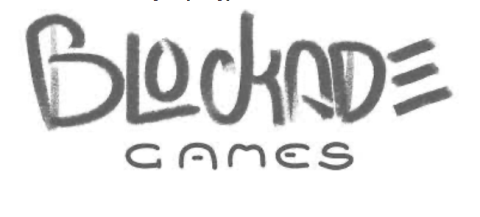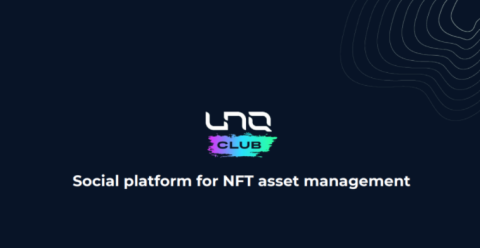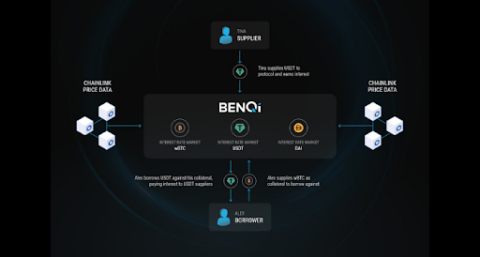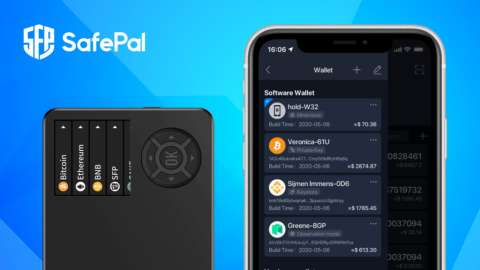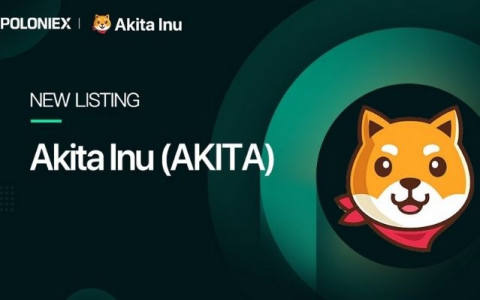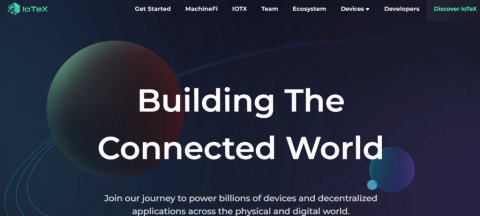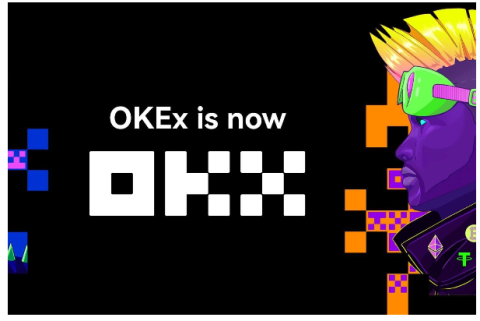What is thena? Discover the outstanding features of Thena and THE . token

Ngoài PancakeSwap, hệ sinh thái BNB Chain còn có một AMM khác có TVL đạt 150 triệu USD chỉ sau hai tháng ra mắt, dự án này được gọi là Thena.

Automata Network is a decentralized service protocol that provides middleware-like security services for Dapps on Ethereum and Polkadot for privacy, high assurance, and computing power. easy.
The protocol enables a number of use cases such as anonymous voting and miner extractable value (MEV) mitigation by leveraging the latest cryptography and privacy-preserving algorithms, and with a trusted execution environment (TEE).
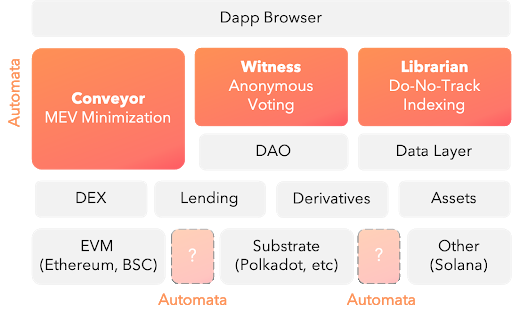
Advantages of Automata Network
Automata Network aims to be recognized as a security service for DeFi and Web 3.0 , with a privacy middleware proposition. The aim of the project is to fill a gap in the market by providing privacy-focused solutions that integrate with existing blockchain infrastructure in an intuitive, seamless manner. Its applications are built for Web 3.0 purposes, including anonymous voting, minify miner extractable value (MEV), and zero-track indexing. These allow users to transact securely, regain control of their identity, and provide better building blocks for developers with open source code and APIs.
Its anonymous voting service, called Witness, offers low-cost, off-chain voting, results-based on-chain execution, and varying degrees of privacy, from private to public, based protocol requirements. The solution supports Ethereum, Binance Smart Chain, and other substrate-compatible EVM chains. Each of these functions can be used independently or in combination. Example: If a project wants to use Witness as a signaling engine without chaining:
Conveyor is Automata's MEV mitigation solution, which is not chained and works seamlessly with DEXs like Uniswap. It imports and exports transactions in a defined order, so creating a no-run zone eliminates the chaos of transaction reordering. Features include gas-free trading, anti-priority, order privacy, and integration with other DEXs. Conveyor provides users with the following additional features:
A few other highlights of Automata Network
The explanatory method can be verified
When Geode completes the specified tasks, various accounting methods are used to determine its compensation. The pay-as-you-go method allows users to pay for a calculation on their demand (use) or schedule a payment, such as hourly, daily, monthly, or yearly.
Applicability and speed of Dapp
Automata's ultimate goal is to give developers the tools they need to create powerful applications that can compete with online or mobile apps in general.
Interoperability backed by a consistent cross-chain support system
Automata Network provides simultaneous privacy protection interfaces for different blockchains to exchange data and collaborate on a shared data file.
Some notable news
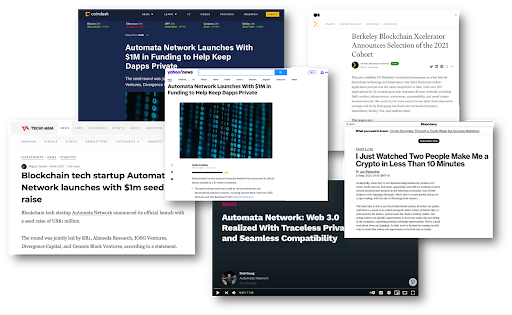
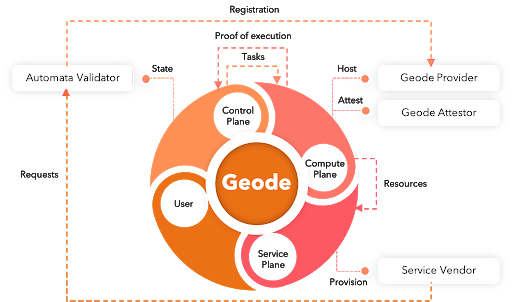
Automata's protocol design overview
Automata node
There are two types of nodes in Automata Network:
Automata Validator
Automata Validator participates in finding Proof-of-Stake consensus. They are also responsible for any “pilot” related duties, including the management of:
Automata Geode
Automata Geode uses a number of advanced technologies, including visible RAM, to successfully create a protected and isolated environment that conceals data access patterns.

Automata plane

Automata Validator and Automata Geode interact with each other on 3 planes, namely Control, Compute and Service. Each plane serves a distinct and important function:
Automata's products
Automata Network's Roadmap Includes Stages

Genesis (Carboniferous Period)
The moment marked the beginning of Automata Network's decentralization. The network will start with a set of authority nodes to kickstart block production, with more features unlocked in subsequent phases through fork-free upgrades.
Original Token (Permian Period)
Automata's native token, ATA, will work on the network with transfers (allowed). Once the network starts processing token transfers, this will lay the groundwork for native token usage in every aspect of the network, including network fees, governance voting, staking, and more.
Bridge Token (Triassic Era)
A bridge token will be launched to allow users to convert between ERC-20 ATA and native ATA. Existing ERC-20 ATA token holders can connect their tokens to Automata Network and receive native ATA tokens for purposes ranging from paying transaction fees to participating in future chain governance.
External Integration (Jurassic Era)
As the network grows, more community-maintained nodes will be allowed to join the network to further decentralize the network. This helps to test the connectivity and stability of the network. Integration with explorers, wallets, and exchanges will also begin at this stage.
Use Cases (Cretaceous Period)
The first wave of middleware services developed by Automata will be brought to the network. Users can interact with these services through bridges with ATA tokens. More use cases will be added to the network as the network scales in the next phases.
Scaling (Paleogene Period)
The network will begin upgrading to the nominated Nominated Proof of Stake consensus to grow the network with external validators. Incentive rewards will be distributed to validators and token holders who nominate validators. The network size will increase in a controlled manner.
Governance (Neogene Era)
Decentralized governance will initiate and replace sudo privileges previously secured by the Automata team. The network goes into a higher hierarchy of management structure. Token holders can submit suggestions to improve the network.
Compute Plane (Quaternary Period)
The Control plane will enter a steady state after passing the previous stages successfully. Future stages will continue to be based on the expansion of the Compute plane, where a computer node (Geode) will join the network to host middleware services. Multiple roles will be accepted into the network, including geocoder, geocoder, and service provider.
Development team
Automata was founded in 2019 by a group of blockchain developers and researchers, including former founding members of Ziliqa. Co-founder Zheng Leong Chua holds a PhD in computer science from the National University of Singapore. Meanwhile, another co-founder, Deli Gong, previously worked at Ziliqa as an infrastructure leader. The group has a total of 11 people and has received a Web3 Grant (2020), including a participant in the Web 3.0 Bootcamp (2020), Berkeley Blockchain Xcelerator (2021) and a Polkadot Decoded Mainstage speaker (2021).
Investors
The project was recently invested strategically by Binance Labs. In addition, other Automata Network investors include well-known names such as KR1, Alameda Research (founded by FTX executive Sam Bankman-Fried), IOSG Ventures, Divergence Capital, Genesis Block Ventures and Jump Trading.
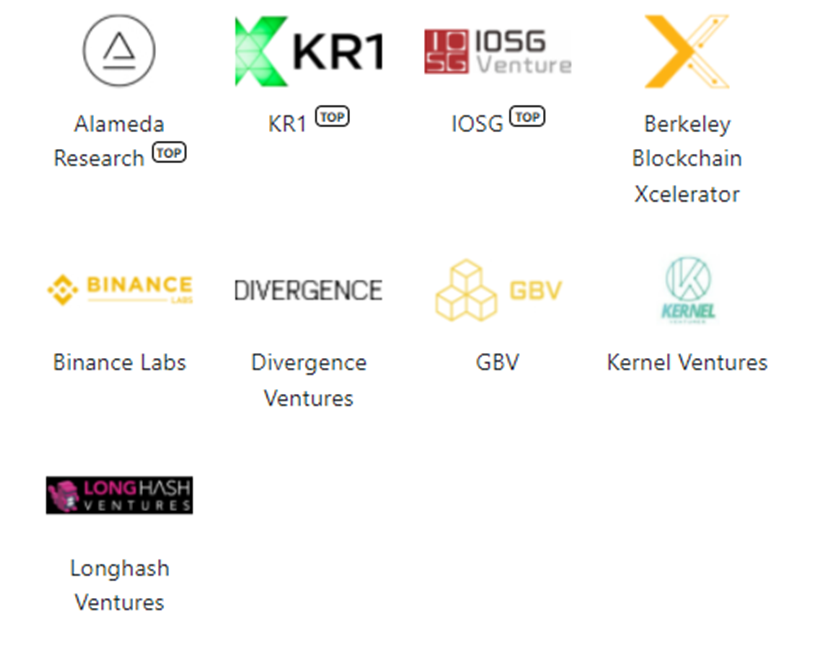
Partner
Automata Network's current partners include famous blockchain networks such as: MathChain, Celer Network, Celer Network, Crust Network, Moonbeam, Litentry, Clover Finance, Litmus and Astar.
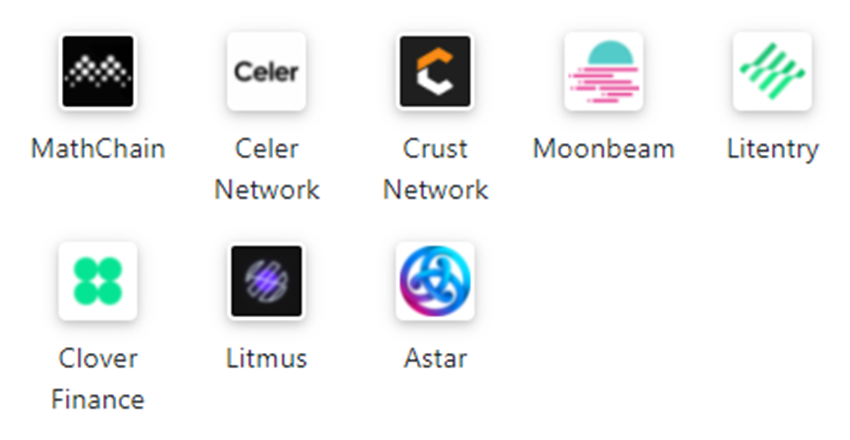

Automata Network intends to grow a global community and establish a social media presence with national bases. With its proposal to provide a secure middleware layer for cross-chain Dapps, Automata Network aims to be recognized as a security service for DeFi and the overall Web 3.0 space.
Current community development strategies include:
ATA is Automata Network's native utility token
ATA . Token Details
Token sales
| Token name | ATA |
| Allocate the seed round | 50,000,000 ATA |
| Seed sale token price | $0.020/ATA |
| The number of seed rounds has increased | 1,000,000 USD |
| Strategic sale round allocation | 60,000,000 ATA |
| Strategic sale token price | 0.040 USD/ATA |
| The number of strategic selling rounds has increased | 2,400,000 USD |
Token Allocation
| Token name | ATA |
| Binance Launchpool | 4% of total supply |
| Seed sale round | 5% of total supply |
| Strategic sale round | 6% of total supply |
| Strategic partners and advisors | 5% of total supply |
| Team | 15% of total supply |
| Dev . Ecosystem and Community | 30% of total supply |
| Protocol Reserve | 35% of total supply |
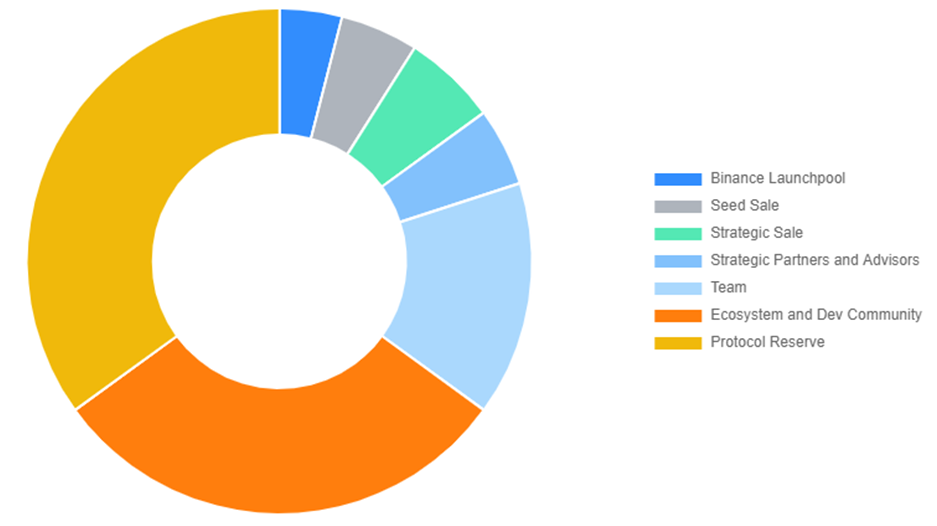
Token payment schedule

The ATA token is currently available on most of the major exchanges in the market.

Security and decentralization are key factors for many organizations to choose blockchain. However, not many blockchains meet this criterion. Automata Network plans to fill that hole through its products like Intel SGX which use encryption and remote authentication to ensure end-user privacy from all angles. Automata Network can bank on this feature and get more investments from potential institutions that value their security.
Automata Network has raised $2.4 million from Binance Launchpool, which has given the project a good reputation in the crypto market.
Currently, considering many volatility factors, it is difficult to say in which direction Automata Network will tilt, which is why investors should keep an eye on market indicators and technical opinions of crypto experts before investing in this token.
Automata Network is an off-chain privacy security solution that allows users to participate in voting without revealing their identity during blockchain governance. This is a relatively potential project and can be developed in the future.
For more information about the Automata Network project, readers can access the media channels below:
Ngoài PancakeSwap, hệ sinh thái BNB Chain còn có một AMM khác có TVL đạt 150 triệu USD chỉ sau hai tháng ra mắt, dự án này được gọi là Thena.
Blockade Games provides a platform that allows developers to create blockchain games. In addition, Blockade Games also creates many interesting free games.
UNQ Club is a project that provides a blockchain platform that allows investors to collect and manage existing NFT assets.
BENQI is one of the important pieces of the Avalanche ecosystem. Join TraderH4 to find out what BENQI (QI) is as well as detailed information about the QI token.
In addition to a cryptocurrency storage wallet, SafePal is also known to many investors for its SFP tokens and airdrop events with attractive rewards.
The fever from Akita Inu in the Crypto market in the past time has created a great buzz along with the rapid development of the "dog house token".
What is IoTeX? This is a blockchain built and developed in conjunction with the Internet of Things (IoT). Join TraderH4 to learn this article.
What is OKB? OKB is an exchange coin of OKX and the OKX Chain blockchain. Let's learn about OKX and OKB exchanges with TraderH4 in this article.
DROPP GG brings an innovative and novel idea to provide an NFT mint platform based on geographies outside of the real world.
CronaSwap is a DEX built on Cronos Chain, which has a similar model to Uniswap.
